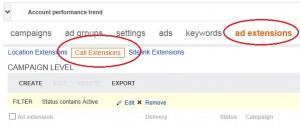With the continued increases in mobile device (smart phone) sales, it’s more important now than ever to have a different strategy in place when targeting mobile devices. The approach to mobile advertising cannot simply be just to duplicate your PC/tablet campaigns, and assign different bids. Competition is ever increasing, as well as mobile device users expectations. Here are three tips to improve the performance of your mobile device targeted campaigns:
1. The most important thing to remember (and a lesson I learned the hard way) is make sure you use mobile friendly pages, or mobile apps for your destination URL’s. If you simply land on your desktop site, your bounce rates will be horrendous! Think about it – Who wants to be surfing the net on their smart phone, and be re-directed to a site which doesn’t load properly, and can’t be effectively used with your device? If you don’t have a mobile friendly site, or a mobile device app, you may want to reconsider how your strategy for targeting mobile devices (or removing mobile devices from active campaigns), and put those resources towards optimizing your website to accommodate mobile devices.
2. Android devices and iOS devices are not the same thing. I know it sounds like a lot of extra work, but if you have already put in the effort to optimize your site for mobile device users, it’s well worth the effort to create separate campaigns for each device OS. Especially if your are landing on your apps page. Target Android devices and land on your Android app, and target iOS devices to land on your iOS app pages. If you are using a mobile site destination URL, it’s still worth the effort to isolate your mobile campaigns by OS. Bids, budget, and various KPI’s will differ between devices and audiences.
3. Know your audience! Just as Google users exhibit different behaviors than Bing users, there are different demographics that each device OS appeals to, and you shouldn’t treat those audiences the same. Android devices are more plentiful and made by several different manufacturers. Where as iPhones are all made by Apple, and the brand loyalty can be quite extreme. 🙂 You will have a hard time getting permission to use trademarked terms in your ad copy, but keywords, targeting methods, even content pages viewed and on site engagement behaviors will differ between the two audiences.
These few tips are no substitute for the ABT’s of PPC advertising – Always Be Testing! The more you isolate and optimize your campaigns the more appealing the personalized message will be for each unique user. Mobile devices are no exception. The tide has turned, and mobile users have more options now than ever. If you don’t reach out to your audience, your competitors will. 🙂




